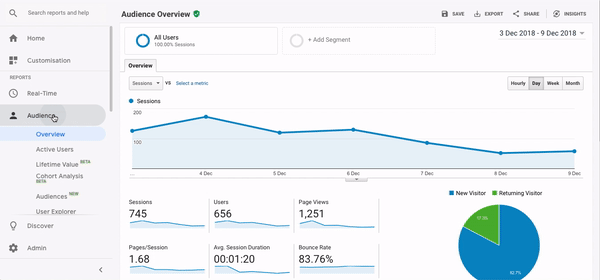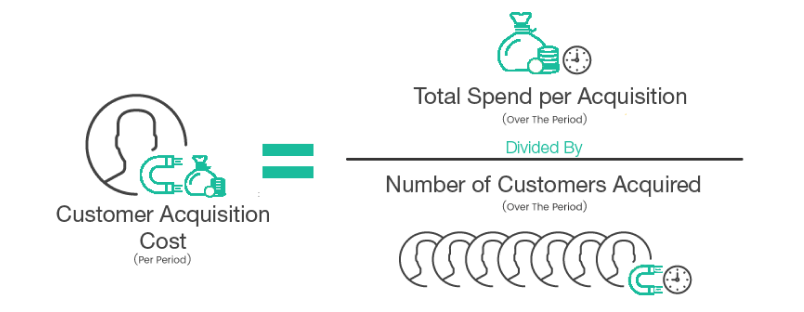As a marketer, you understand the importance of lead generation for the success of your business. But how do you know if your lead generation campaign is working? This is where lead generation metrics come in.
Lead generation metrics are essential for measuring the success of your campaign and identifying areas for improvement. In this article, we'll discuss the top lead generation metrics that matter and how to use them to optimize your campaign for success.
Step 1: Define Your Goals
Before you start measuring your lead generation metrics, you need to define your goals. What do you want to achieve with your lead generation campaign ? Do you want to generate a certain number of leads, improve your conversion rates, or increase your revenue?
Defining your goals will help you determine which lead generation metrics are most relevant for your campaign and provide a clear benchmark for measuring success.
Step 2: Track Your Website Traffic

Website traffic is a critical lead generation metric that provides insights into how many people are visiting your website and where they're coming from. By tracking your website traffic, you can identify which sources are driving the most traffic and adjust your strategy accordingly.
To track your website traffic, you can use tools such as Google Analytics or SEMrush. These tools provide data on your website's traffic volume, traffic sources, bounce rates, and more.
Step 3: Monitor Your Conversion Rates
Conversion rates are another essential lead generation metric that measures the percentage of website visitors who take a desired action, such as filling out a form or subscribing to your email list.
To monitor your conversion rates, you can use tracking tools such as Google Analytics or HubSpot. These tools allow you to set up conversion tracking for specific actions and measure the success of your campaigns in real-time.
Step 4: Analyze Your Cost Per Lead (CPL)
Cost per lead (CPL) is a crucial metric that measures how much it costs to generate one lead. Knowing your CPL can help you determine the ROI of your lead generation campaign and identify areas for cost optimization.
To calculate your CPL, divide the total cost of your lead generation campaign by the number of leads generated. For example, if you spent $1,000 on a campaign that generated 100 leads, your CPL would be $10.
Step 5: Evaluate Your Return on Investment (ROI)
Return on investment (ROI) is a critical metric that measures the profitability of your lead generation campaign. To calculate your ROI, subtract the total cost of your campaign from the total revenue generated and divide the result by the total cost.

For example - if you spent $1,000 on a campaign that generated $5,000 in revenue, your ROI would be ((5,000-1,000)/1,000)*100 = 400%.
Step 6: Measure Your Customer Acquisition Cost (CAC)
Customer acquisition cost (CAC) measures the total cost of acquiring a new customer, including marketing and sales expenses. Knowing your CAC can help you determine the profitability of your lead generation campaign and identify areas for cost optimization.

To calculate your CAC, divide the total cost of your lead generation campaign by the number of new customers acquired. For example, if you spent $10,000 on a campaign that generated 100 new customers, your CAC would be $100.
Step 7. Measure Your Lead Quality
Lead quality measures the likelihood that a lead will convert into a customer. By measuring your lead quality, you can identify which marketing channels are generating the most qualified leads and optimize your campaigns accordingly.
Here are some ways to measure lead quality:
- Track the percentage of leads that convert into customers
- Track the percentage of leads that meet your ideal customer profile
- Track the number of leads that request a demo or consultation
By measuring your lead quality, you can identify which marketing channels are generating the most qualified leads and optimize your campaigns accordingly.
Step 8. Prioritize Your Best Leads
Once you have measured the quality of your leads, it's important to prioritize them based on their likelihood to convert into a customer. This will help your sales team focus on the leads that are most likely to result in a sale.
Here are some ways to prioritize your leads:
- Use lead scoring to assign a score to each lead based on their engagement with your company and their fit with your ideal customer profile
- Use lead nurturing to build relationships with leads who are not yet ready to buy
- Implement lead routing to ensure that the most qualified leads are assigned to the appropriate sales team member
By prioritizing your best leads, you can increase the efficiency of your sales team and improve your conversion rates.
Step 9. Analyze Your Sales Funnel
Your sales funnel represents the journey that a lead takes from initial contact with your company to becoming a customer. By analyzing your sales funnel, you can identify areas where leads are dropping off and optimize your campaigns accordingly.

Here are some ways to analyze your sales funnel:
- Use funnel visualization tools to visualize the conversion rates at each stage of your sales funnel
- Analyze the behavior of leads at each stage of your sales funnel to identify areas where they may be experiencing friction or confusion
- Implement A/B testing to experiment with different messaging and tactics to improve conversion rates at each stage of your sales funnel
Step 10. Monitor Your Email Open and Click Rates
Email marketing is a popular lead generation tactic, and it's important to monitor your email open and click rates to measure the success of your campaigns.
Here are some tools you can use to monitor your email open and click rates:
- soopr
- HubSpot
- Mailchimp
- Constant Contact
By monitoring your email open and click rates, you can identify which email campaigns are the most successful and optimize your campaigns accordingly.
Step 11. Measure Your Social Media Engagement
Social media is a powerful lead generation channel, and it's important to measure your social media engagement to measure the success of your campaigns.
Here are some tools you can use to measure your social media engagement:
- Hootsuite
- Sprout Social
- Buffer
By measuring your social media engagement, you can identify which social media channels are the most successful for generating leads and optimize your campaigns accordingly.
Step 12. Monitor Your Lead Response Time
Lead response time measures the amount of time it takes for your sales team to respond to a new lead. By monitoring your lead response time, you can identify areas where your sales team may be experiencing delays and optimize your processes accordingly.
Here are some tools you can use to monitor your lead response time:
- soopr
- HubSpot
- Salesforce
- Freshsales
By monitoring your lead response time, you can improve your lead conversion rates and improve the overall success of your lead generation campaign.
Step 13. Measure Your Customer Lifetime Value (CLTV)
Your customer lifetime value (CLTV) measures the amount of revenue you can expect to generate from a single customer over their lifetime. By measuring your CLTV, you can identify which marketing channels are the most profitable and optimize your campaigns accordingly.
- Calculate the average purchase value for a customer
- Calculate the average purchase frequency for a customer
- Calculate the average customer lifespan
- Multiply the average purchase value by the average purchase frequency by the average customer lifespan
By measuring your CLTV, you can identify which marketing channels are the most profitable and optimize your campaigns accordingly.
Here's how to calculate your CLV:

- Multiply the average revenue per customer by the average customer lifespan
- Subtract the average customer acquisition cost from the result
By calculating your CLV, you can identify which customers are most valuable to your business and allocate your resources accordingly.
Conclusion
In conclusion, measuring the success of your lead generation campaign requires tracking a variety of metrics, including website traffic, conversion rates, cost per lead, return on investment, customer acquisition cost, lead quality, sales pipeline, A/B testing, marketing qualified leads, lead velocity rate, and customer lifetime value. By monitoring these metrics and optimizing your campaigns accordingly, you can generate more leads and grow your business.





